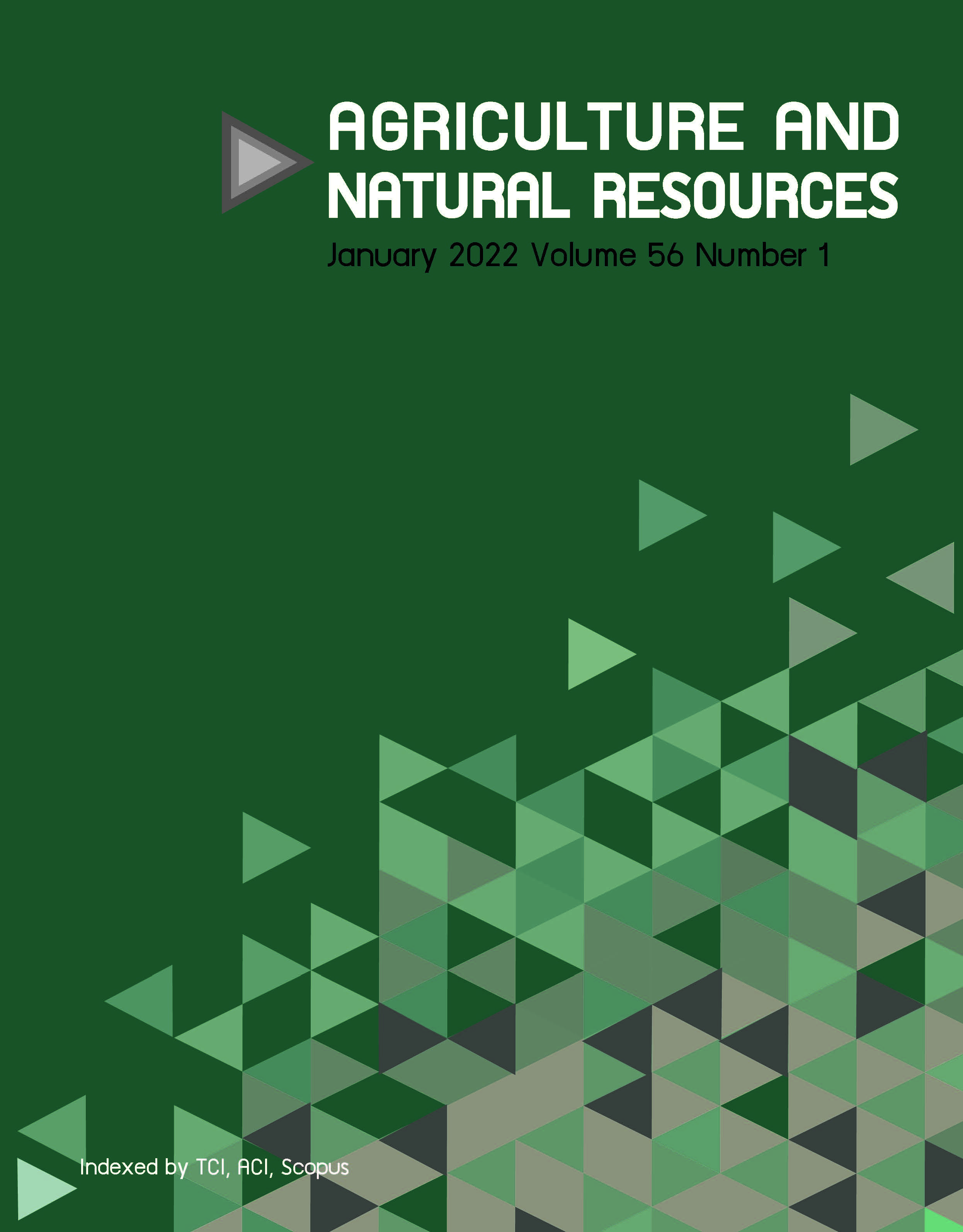Genetic diversity and relationship of Indonesian swamp rice (Oryza sativa L.) germplasm based on agro-morphological markers
Keywords:
Genetic diversity, Genetic relationship, Landraces, Plant breeding, WetlandsAbstract
Importance of the work: Swamp rice (Oryza sativa L.) is essential germplasm for future rice breeding because of some agronomical characters or functional genes.
Objectives: The genetic diversity and relationship was determined of 108 cultivars
of Indonesian swamp rice using 31 agro-morphological markers to identify the distinctiveness of the characters that contributed to the genetic diversity based on Pearson correlation analysis among these characters.
Materials & Methods: The standardized Shannon diversity index (H’) was used to determine the genetic diversity of the germplasm. Principal components analysis (PCA) and the unweighted pair group method with arithmetic mean (UPGMA) were used to identify
the distinctiveness of the characters that contributed to the genetic diversity and to reconstruct relationships.
Results: This germplasm was generally low in genetic diversity (Shannon index value of 0.31 for qualitative and 0.36 for quantitative traits). However, two agro-morphological characters, namely the flag leaf attitude and culm diameter of the basal internode, had the highest diversity (H’ = 0.68 and 0.97, respectively). PCA confirmed that these two characters contributed significantly to the emerging phenomenon. The culm diameter of the basal internode had a moderate correlation with panicle length and the panicle number of the primary and the secondary basal branches (r = 0.44–0.67). The UPGMA revealed that this germplasm was grouped into nine clusters, with the eighth being the largest (71 cultivars). In addition, the UPGMA revealed that some cultivars had closest relationships, such as Unyil with Karat Kaleng and Pelita Rampak versus Katimuri. Conversely, the farthest relationships were for Sawah Kanyut versus Siam Gumpal and Siam Salawi versus Siam Gumpal.
Main finding: This information might be useful in future rice breeding programs, particularly in developing new rice cultivars for swamp areas.
Downloads
Published
How to Cite
Issue
Section
License
Copyright (c) 2022 Kasetsart Universityonline 2452-316X print 2468-1458/Copyright © 2022. This is an open access article under the CC BY-NC-ND license (http://creativecommons.org/licenses/by-nc-nd/4.0/),
production and hosting by Kasetsart University of Research and Development Institute on behalf of Kasetsart University.







